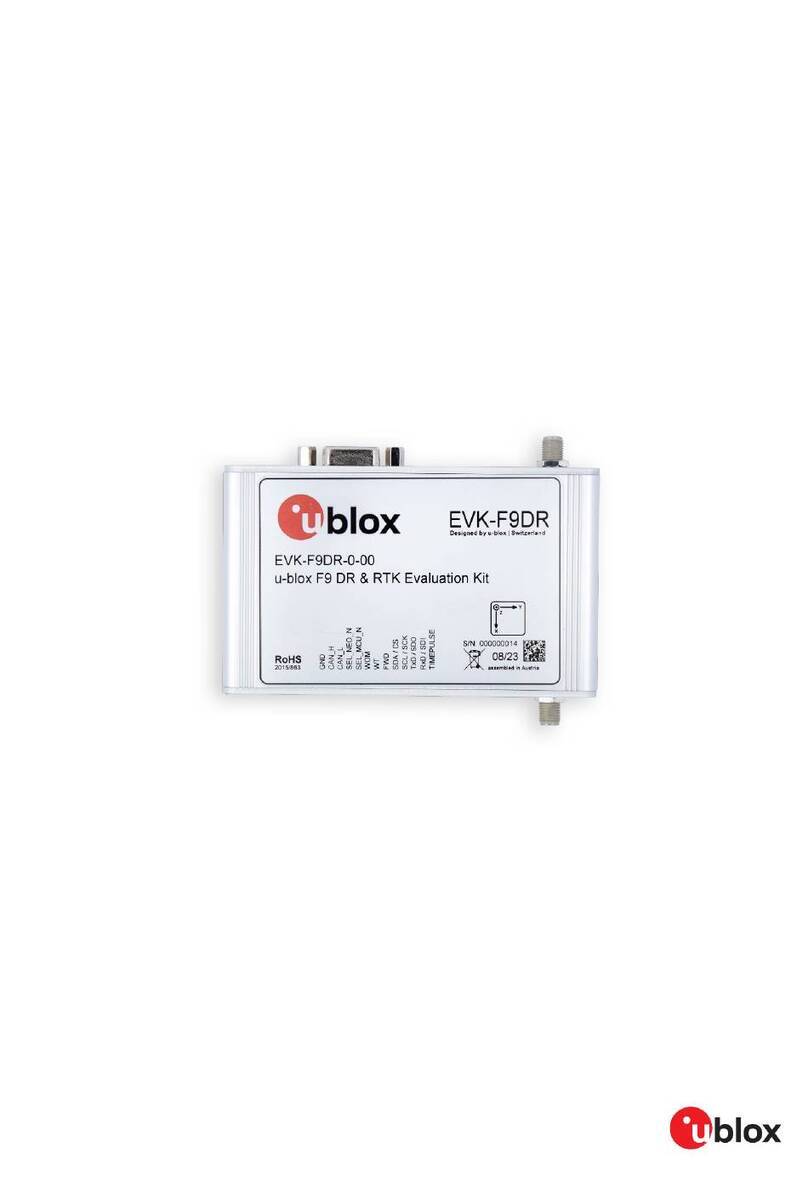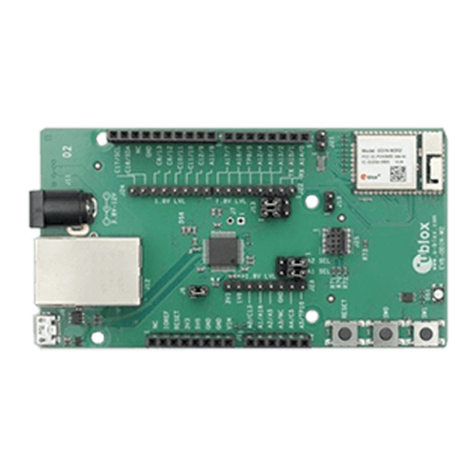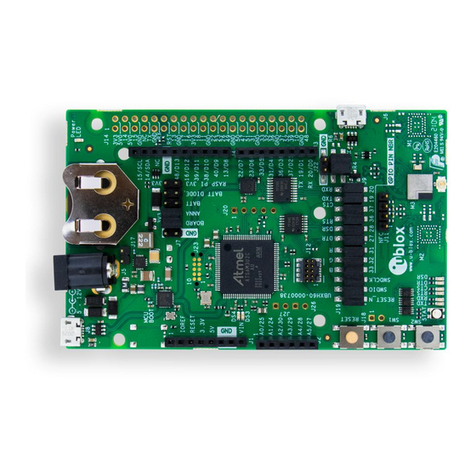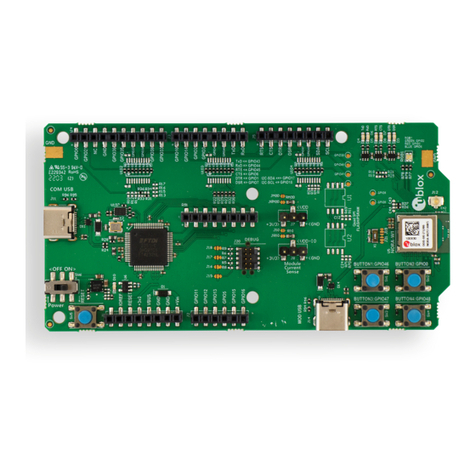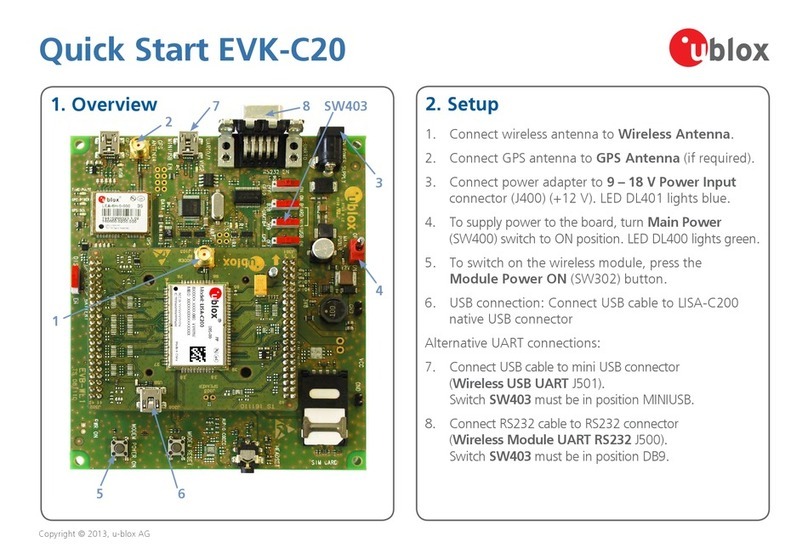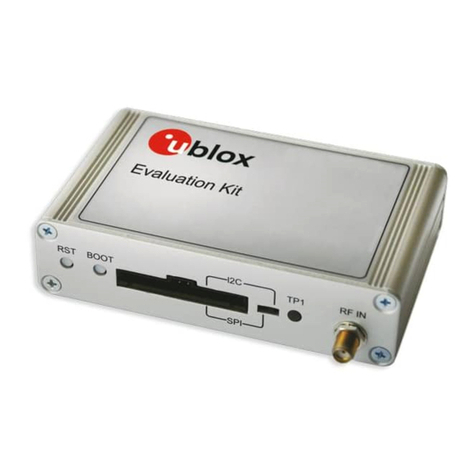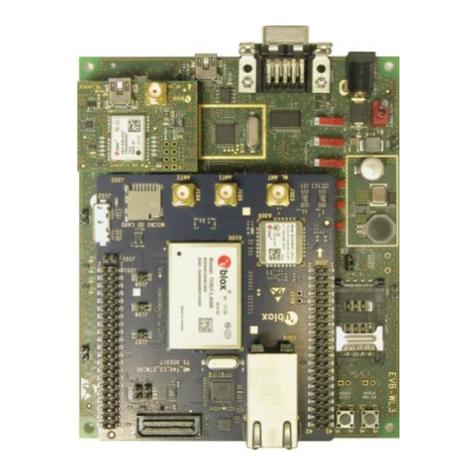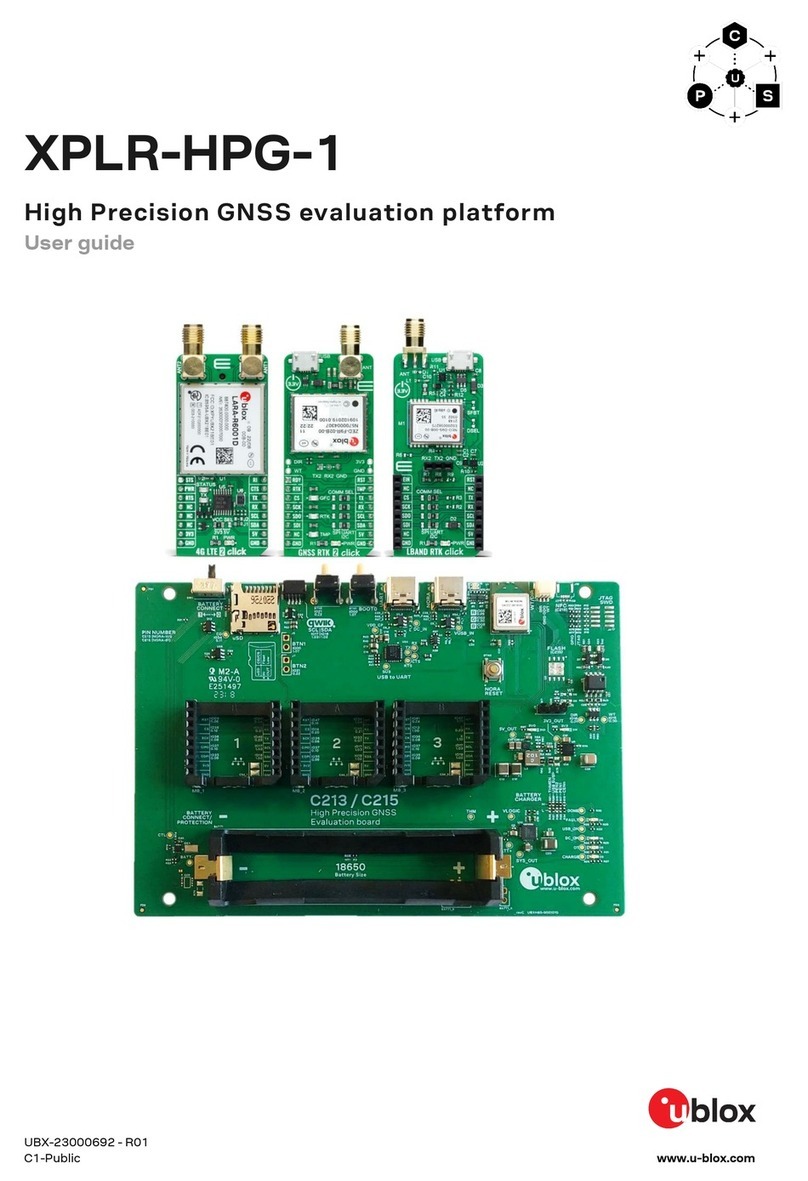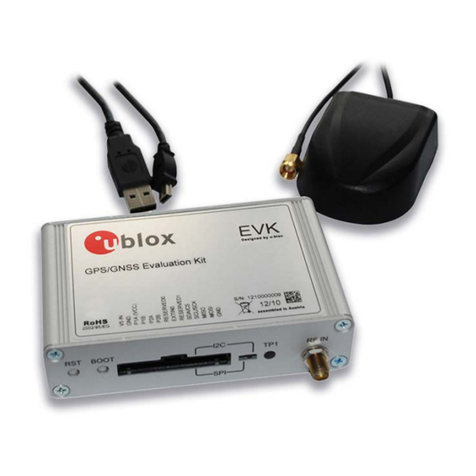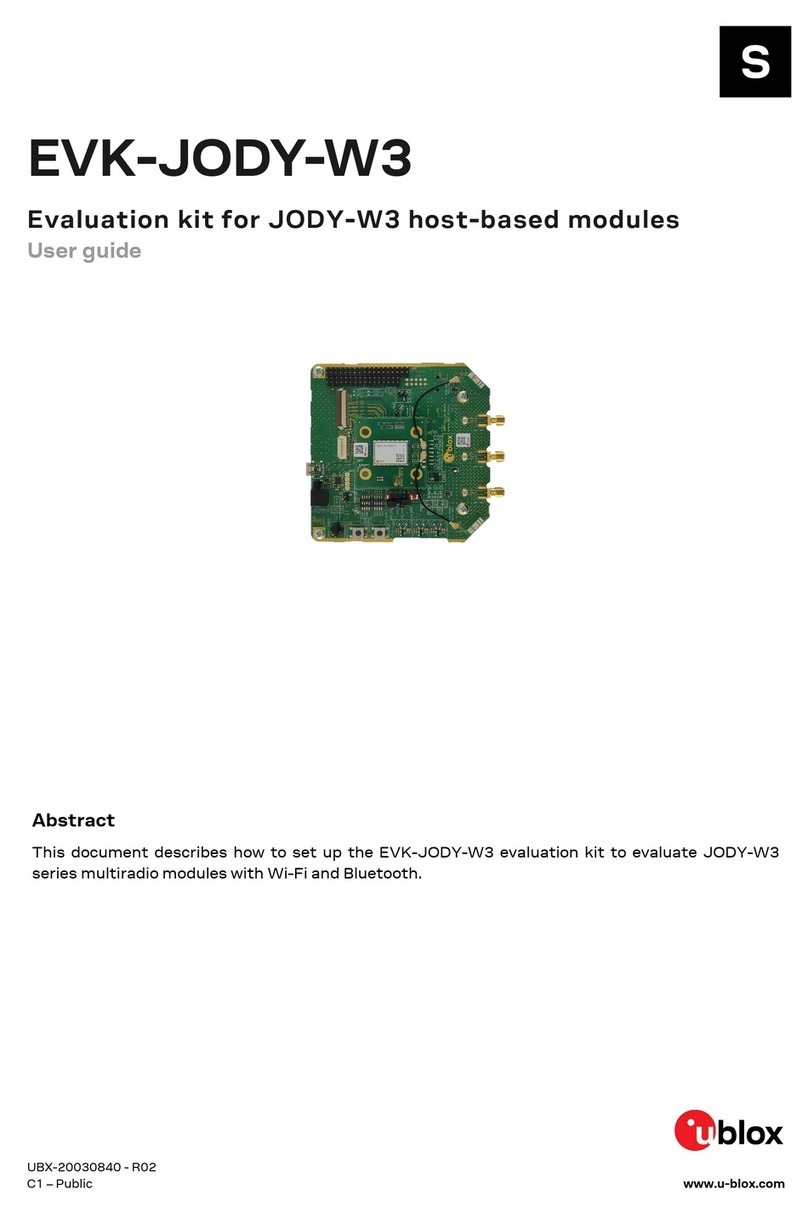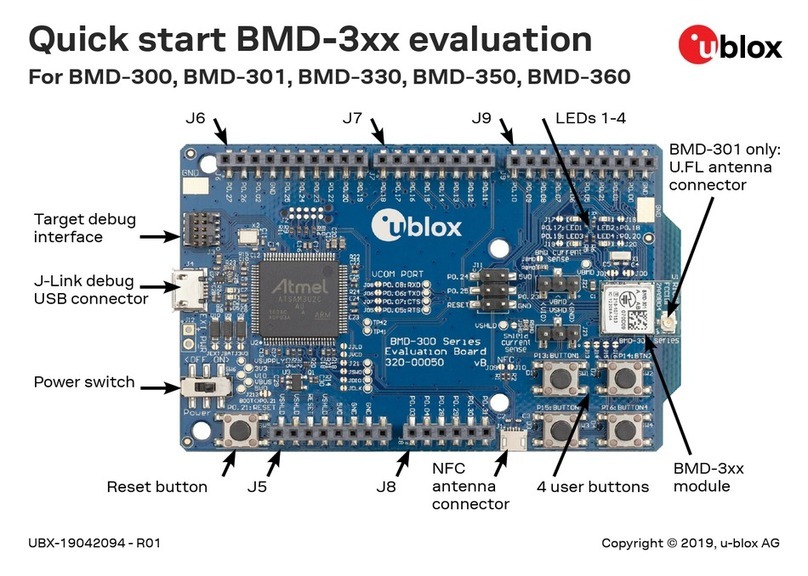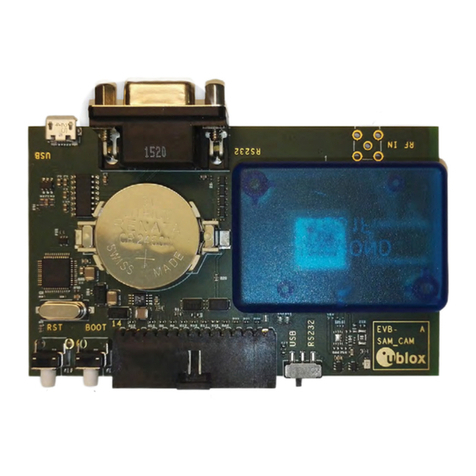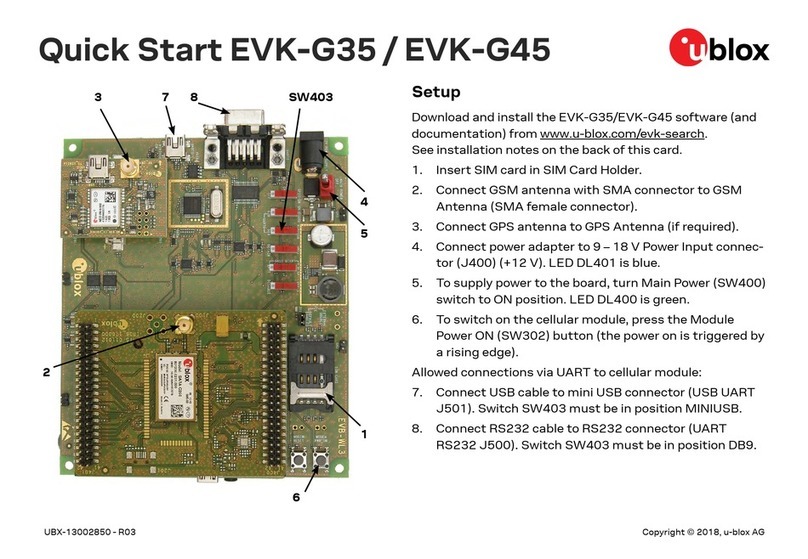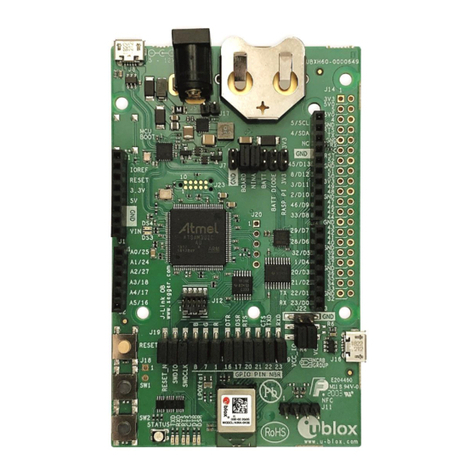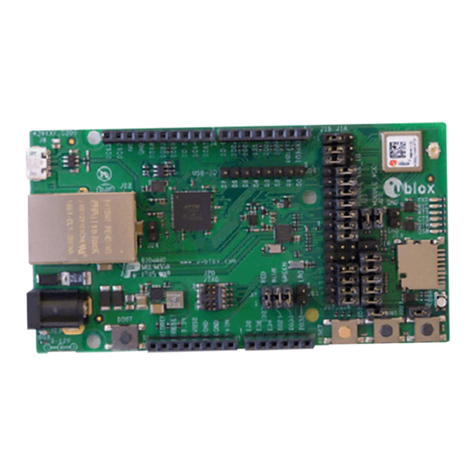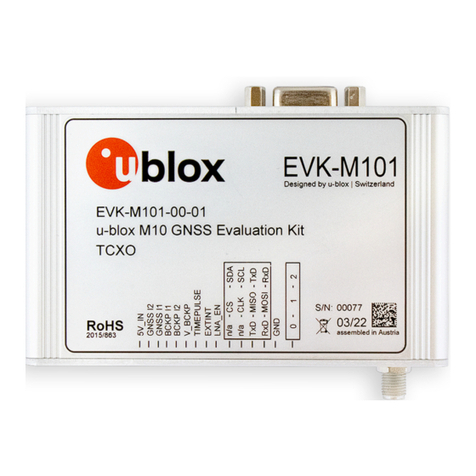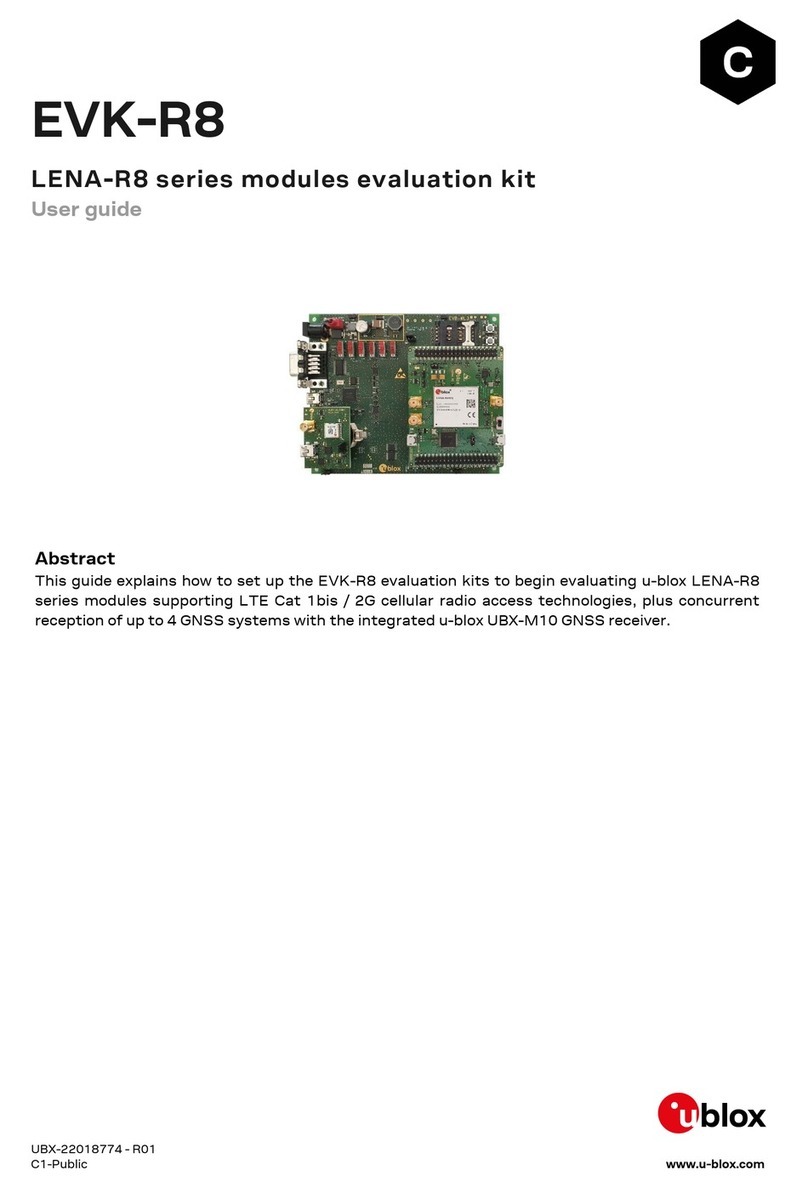
C030-R412M - User Guide
UBX-19010121 - R01 Overview Page 4 of 27
1Overview
The u-blox LTE Cat M1/NB1 and 2G Mbed Enabled™ IoT starter kit is a versatile development platform
that allows quick prototyping of a variety of applications for low-power Internet of Things (IoT).
The u-blox C030-R412M belongs to the u-blox C030 application board family, which consists of several
variants based on the type of u-blox cellular module used:
SARA-U201 HSPA module with 2G fallback
SARA-N211 NB-IoT (LTE Cat NB1) module
SARA-R412M LTE Cat M1 / NB1 and 2G module
LARA-R3121 LTE Cat 1 single-mode module with integrated GNSS receiver
The u-blox C030 application boards, except C030-R3121, have a u-blox MAX-M8C module or a ZOE
GNSS SiP as a concurrent GNSS receiver, thereby enabling straight forward development of location-
aware, globally communicating applications.
The u-blox C030-R412M board provides access to a variety of hardware interfaces (10/100 Mb/s
Ethernet, 22 GPIOs with SPI, I2C, UART, PWM) through the Arduino™ Uno R3 compatible header
connector.
An eUICC (embedded SIM) is integrated on the u-blox C030-R412M-U201 / C030-R3121 variants. The
eUICC comes with International Data Roaming Cellular Connectivity Service by JT® JTGlobal (formerly
Jersey Telecom) with 50 MB of data for the period of 90 days, which can be topped up and extended
on demand.
The u-blox C030-R412M board is powered by an Arm® Cortex-M4 based ST®STM32F437VGT Host
microcontroller, which is fully supported by the Arm®Mbed™platform. The microcontroller has 512 kB
flash, 64 kB RAM, and runs an up-to-96 MHz system clock. The board provides simple USB drag-n-
drop programming and an ST-Link debug interface for the Host microcontroller. The Arm Mbed
platform provides free software libraries and online tools for professional rapid prototyping. The
programming is done using a standard-based C/C++ SDK. The Arm Mbed compiler also supports full
export to various tool chains, for projects that demand it as they go into production.
The u-blox C030-R412M also works with a wide choice of Integrated Development Environments
(IDEs) including but not limited to Arm®Keil®, GCC-based Eclipse IDEs.
This document applies to the C030-R412M variant integrating the SARA-R412M LTE Cat M1/NB1 and
2G module, and the ZOE-M8B GNSS receiver SiP (System-in-Package) only.
Using this guide
This guide assumes the user has basic computer skills and is familiar with the Windows Graphical
User Interface (GUI) and cellular module environments.
The following symbols are used to highlight important information in the document:
☞An index finger points out key information pertaining to device operation and performance.
⚠A warning symbol indicates actions that could negatively impact or damage the device.
